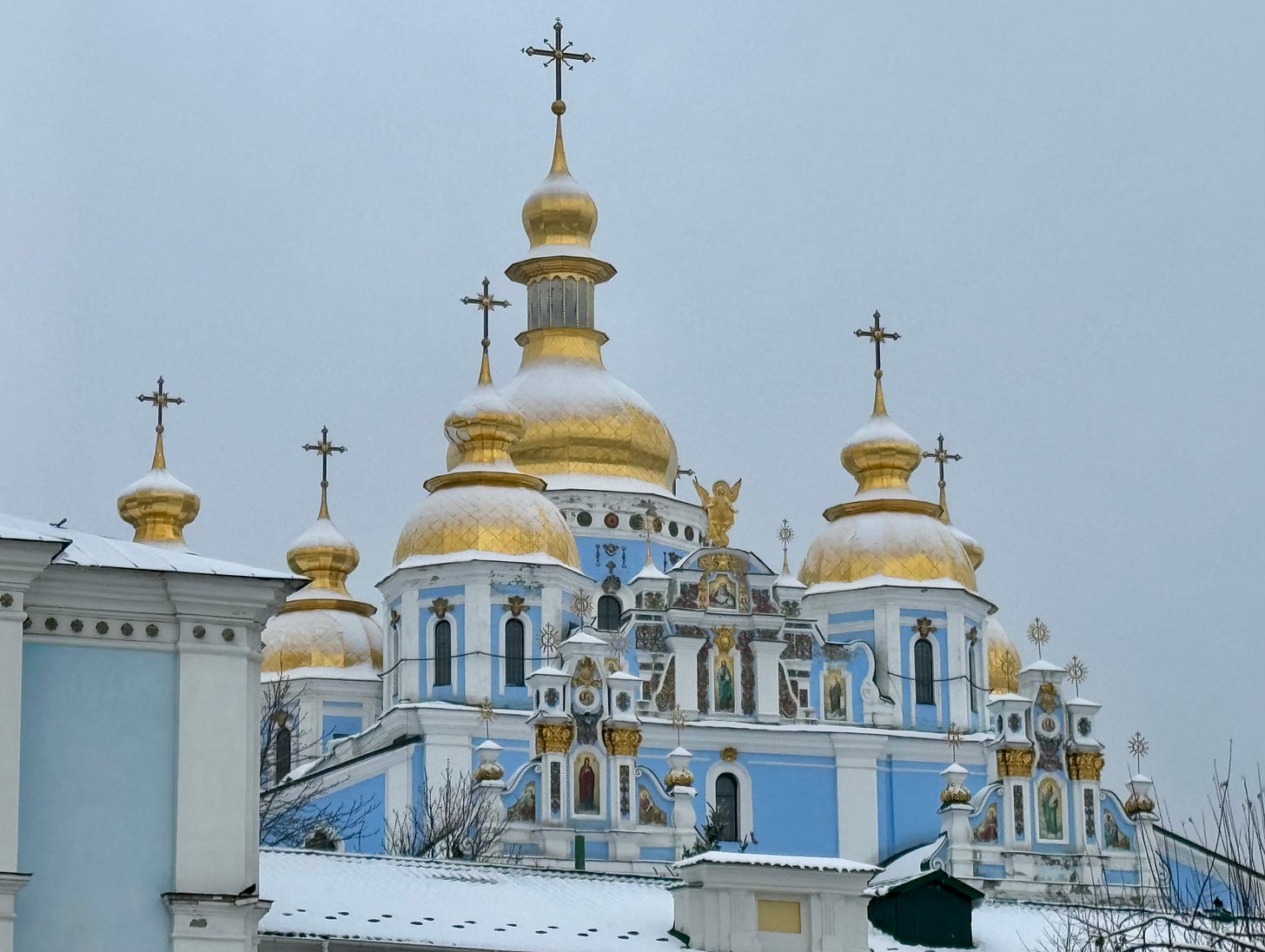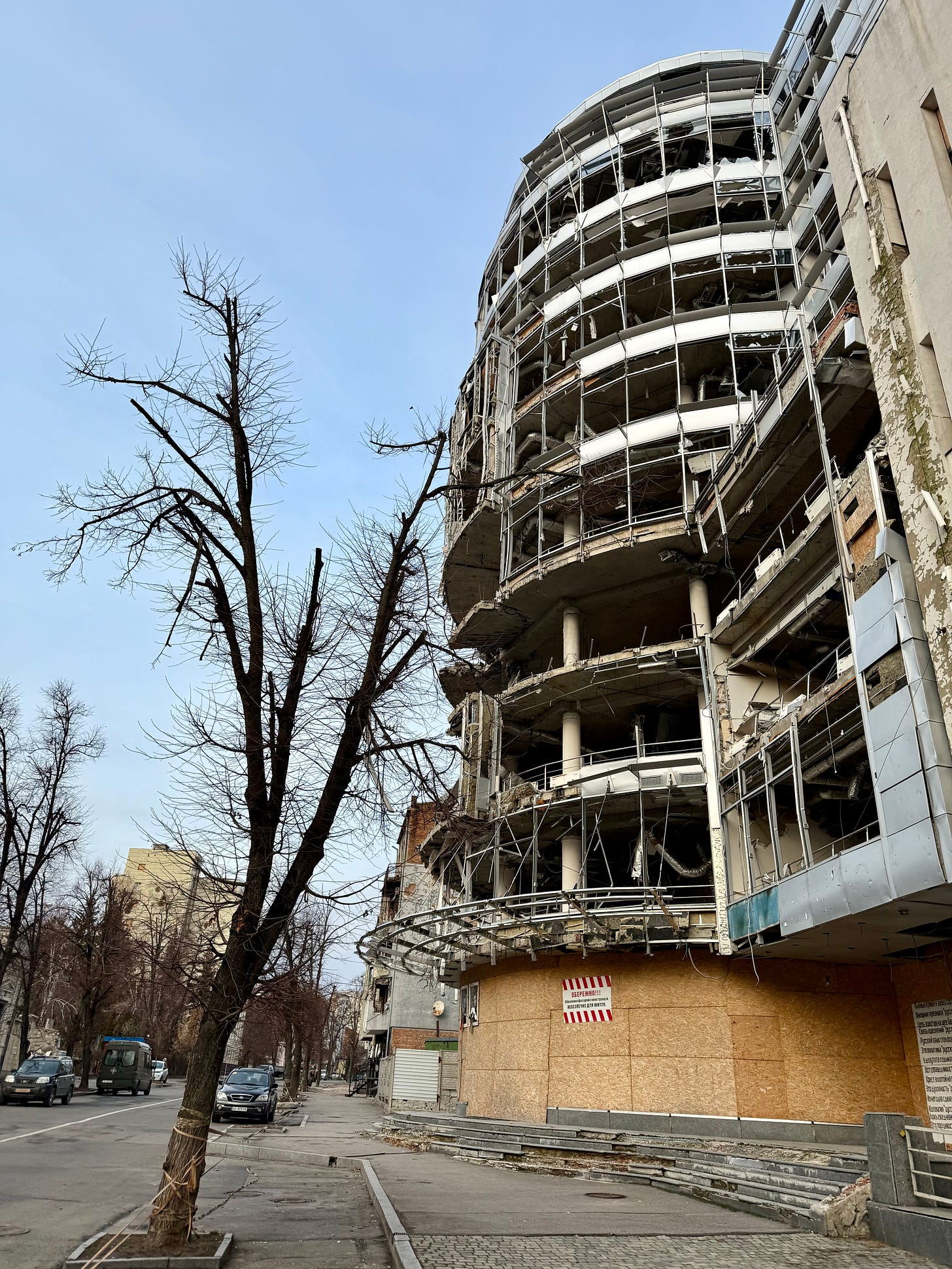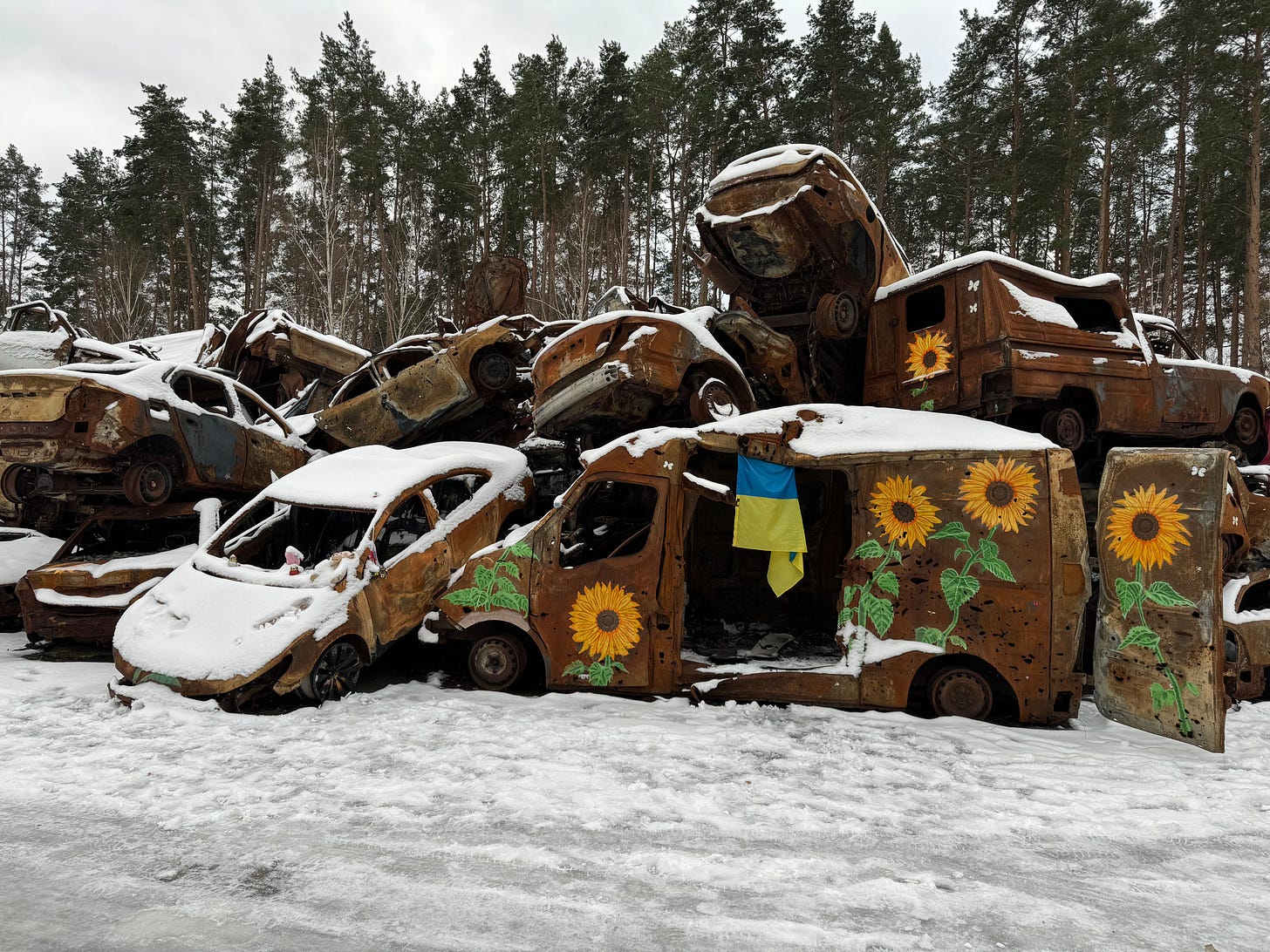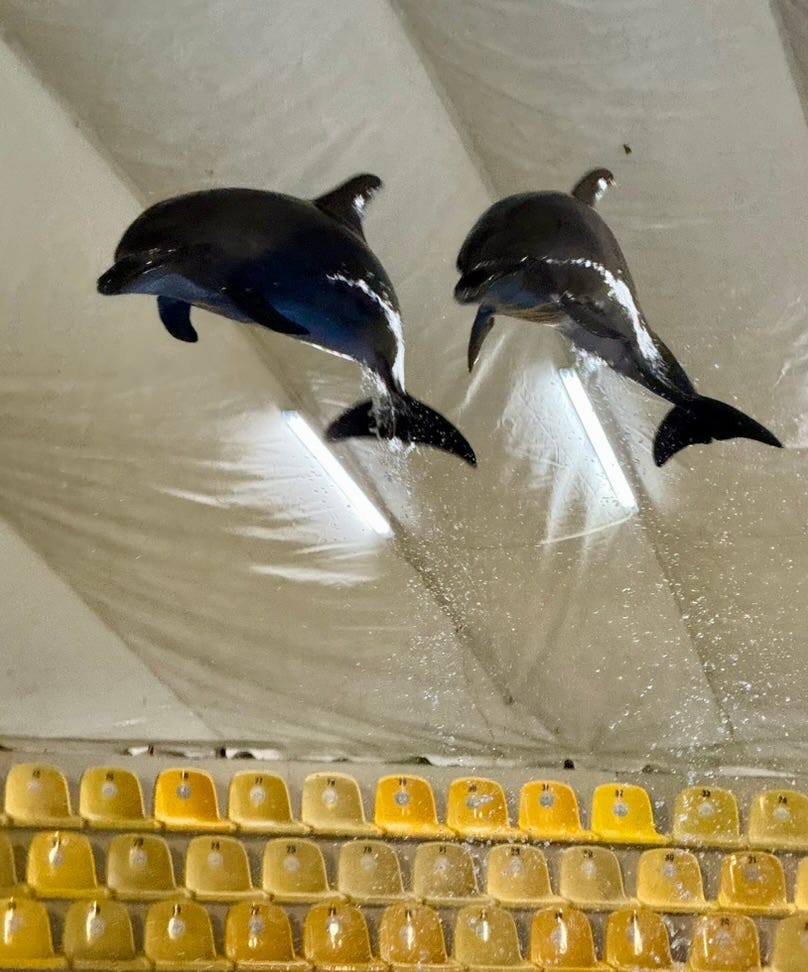To Understand Ukraine, You Have to Be There
What headlines can’t show: ordinary days in extraordinary times.
When people think of Ukraine these days, most picture news headlines and front lines. And while the war is a major part of life here, it’s not the whole picture. The trains still run, kids still hurry off to school in puffy jackets, and cafés and restaurants buzz like anywhere else. Life keeps moving, even when it’s complicated. Spending time here, meeting people, sharing tea, walking the streets, gives you a sense of the place that no news report ever could.
Why Go Now
Ukraine has been living with war for years, yet millions carry on with stubborn normalcy. Visiting doesn’t have to be “war tourism”; it can (and should) be people-to-people travel. Come to understand, not to spectate. Spend money at local cafés and guesthouses, ride the trains, ask questions, and…most of all…listen.
Kyiv, the capital, is where everything converges: history, culture, politics, and humor so dry it will disarm you. Lviv is the gentle on-ramp these from the west by train or bus from Poland, walkable streets, coffee culture for days. Odesa brings Black Sea vibes and natural charm, best reached via Moldova. And if you want to feel the edge of it, Kharkiv is just a few hours from Kyiv by rail: battered, resilient, defiant.

Kyiv: Memory and Motion
Kyiv has many interconnected layers. Morning church bells bounce off socialist-era blocks, lunch is borscht and black bread in a cafeteria that looks unchanged since 1985, and evening might be a contemporary art opening in the Podil neighborhood. You’ll pass memorials that make you stop, then stumble into a café where the barista hands you a small cake “because it’s cold and you’re welcome here.”
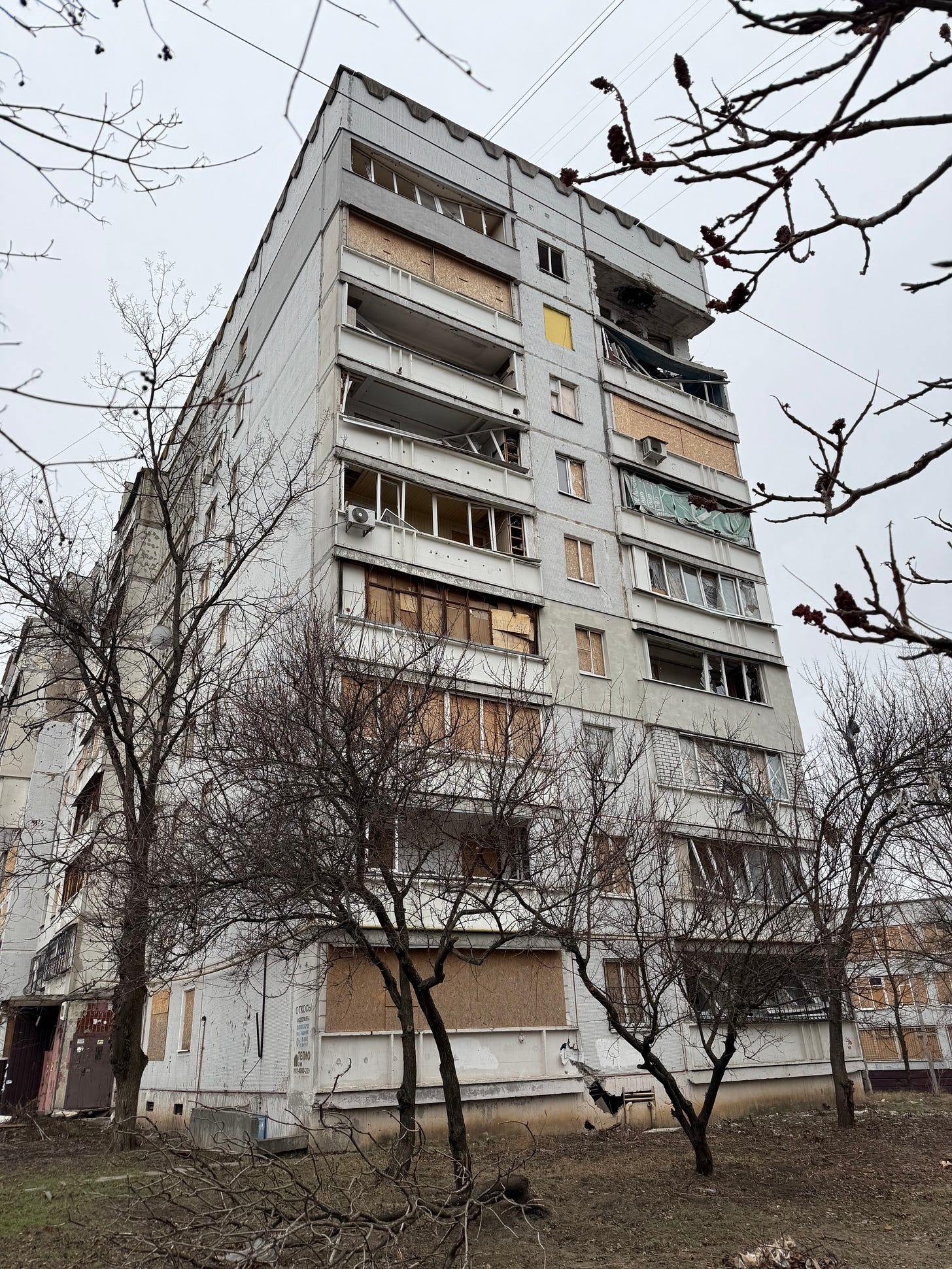
Kharkiv: The Front Line of Normal Life
Kharkiv is classrooms going on amid sirens and friends coordinating volunteer shifts by group chat. I got to volunteer with locals weaving camouflage nets for units at the front. The sirens sounded; the weaving never stopped. You learn that courage can be quiet, repetitive, and strengthened by the collaborative efforts of many hands.
Art, Irony, and Laughing Anyway
Ukrainian humor has a steel core. Street artists paint sunflowers on shrapnel-scarred metal; kids climb snowbanks shaped by tank tracks and still find a way to turn them into slides. A bright sculpture in a city park can feel like mischief against the grey.
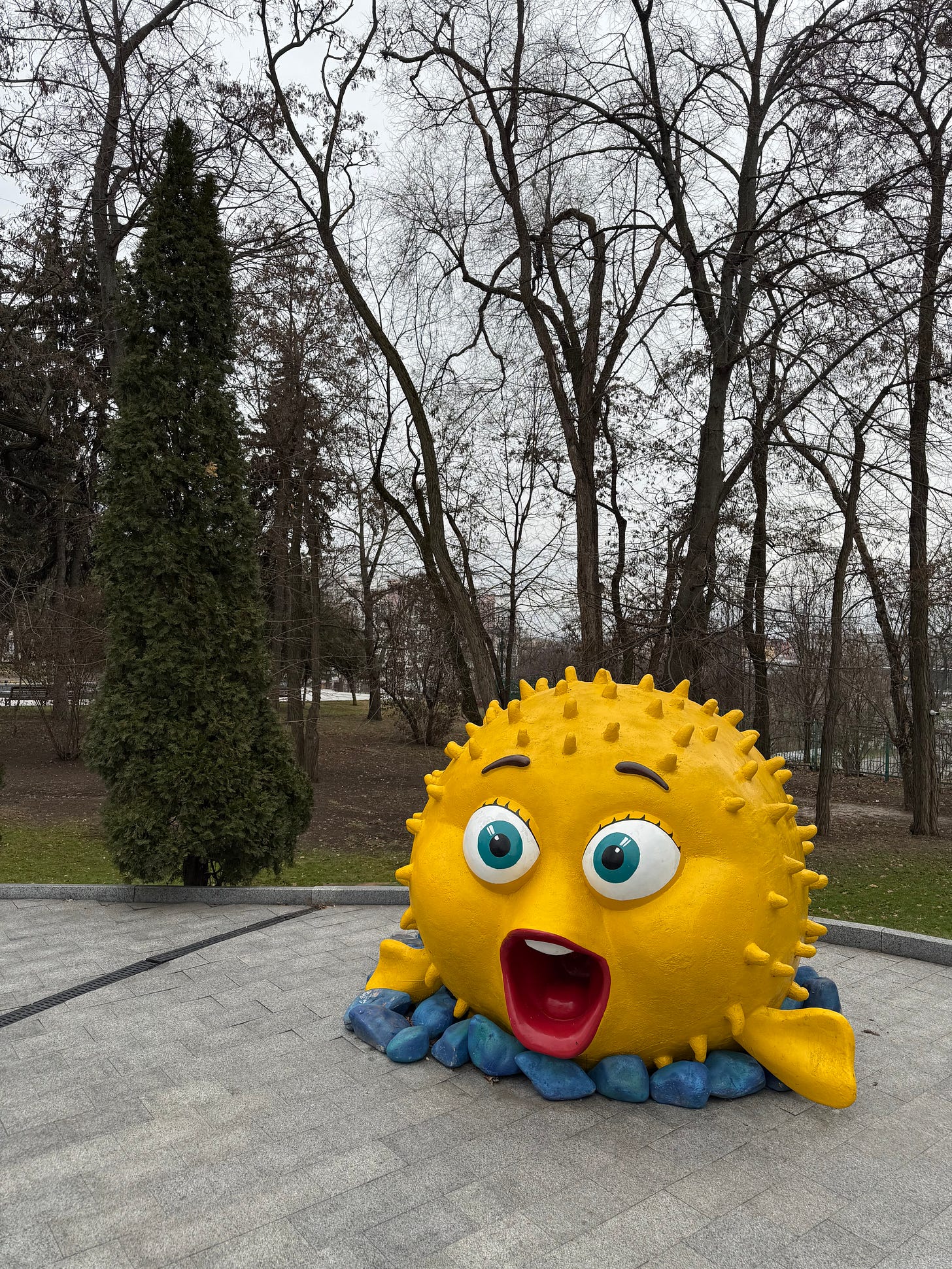
Trains, Stories, and Steel
Ukrzaliznytsia (the national railway operator) has been a lifeline since the early days of the war. On platforms you’ll see soldiers hugging grandparents, vendors hustling by with trays of poppy-seed rolls, and cars patched and repainted into rolling murals.

What You’ll Talk About Later
You’ll talk about kindness: the small child who insisted you play with his stuffed dinosaur on the train; the bartender who refused to charge you because “you came to see.” Most importantly, you’ll talk about the small aspects of daily life: windows boarded up with whatever was on hand, people often not even pausing during air-raid alerts because they’ve become so common…and how quickly it started to feel normal to you.
Practical Notes (Because Your Mom Will Ask)
Air travel: Ukraine’s airports are still closed; come by train or bus via Poland or Moldova. There are many options leaving several times per day.
Where to start: Lviv for a soft landing; Kyiv for the full conversation; Odesa for seaside relaxation; Kharkiv for grit and grace.
How to move: Trains are affordable, punctual, and oddly soothing. Bolt (an Uber-esque app) works like clockwork and you’ll never wait long for a driver…just don’t get caught out close to curfew when everyone races for a ride home.
How to help: Book local; stay local; ask you hosts which verified groups need support this week. Join your new friends and pitch in wherever you can. With most working-aged men (and many women) away at the front those who aren’t could use your assistance.
Head and heart: Heed alerts, carry documents with you just in case, and most of all stay flexible and curious. Remember the old saying: two ears, two eyes, one mouth. Listen and watch more than you speak.
Have I convinced you yet? I’ll planning on spending a few months in Ukraine in early 2026, and once I’ve settled, I’ll be happy to help you experience it for yourself. It’s a place that changes how you see the world…and in these often-divisive times maybe how you see people, too.

